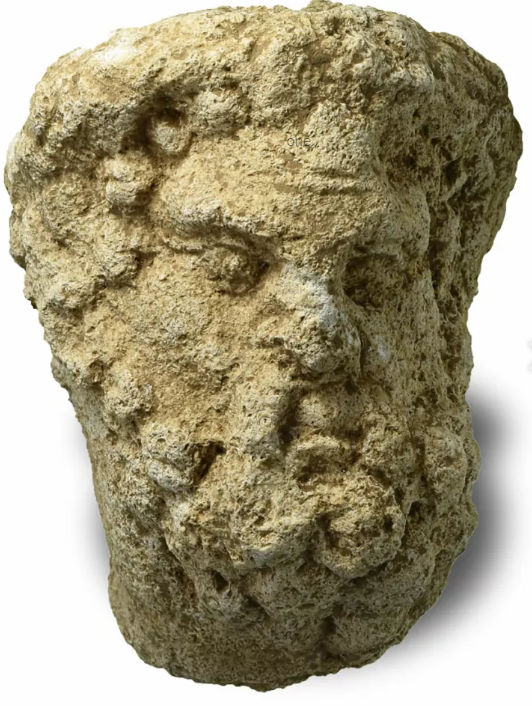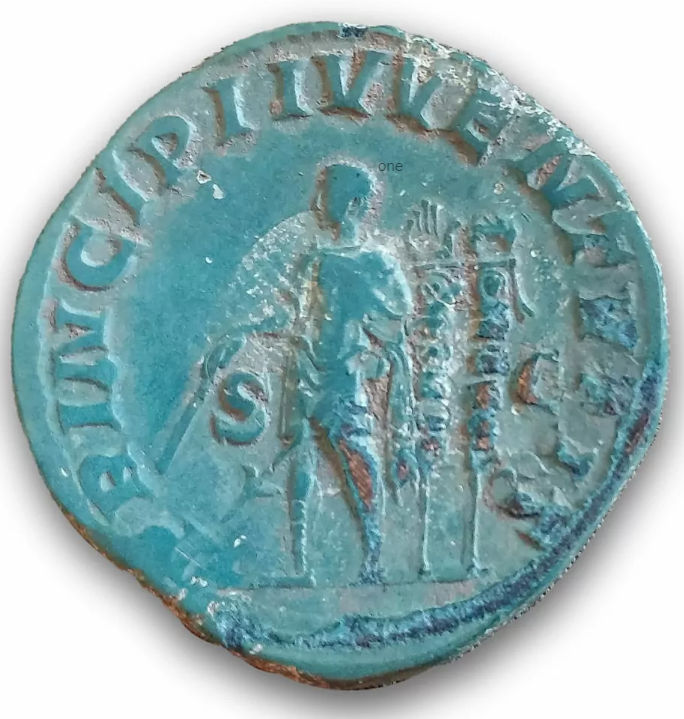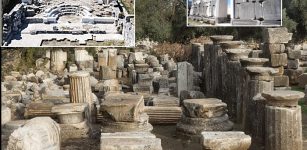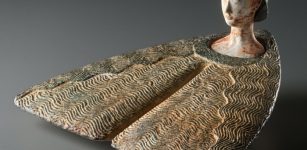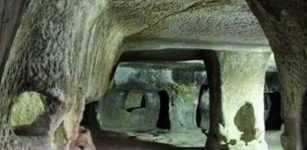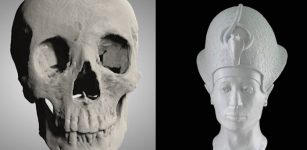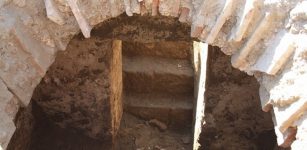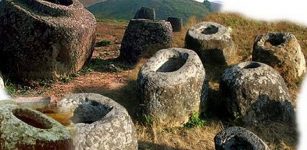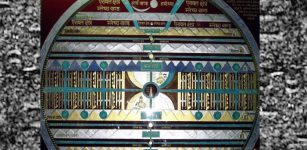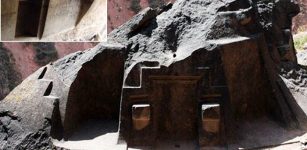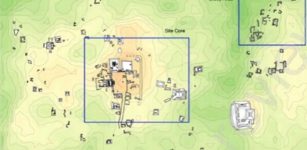Surprising Discovery Of Almost Intact Roman Sanctuary With Temples In The Netherlands
Conny Waters - AncientPages.com - A complete and almost intact ancient Roman sanctuary with temples has been discovered in Gelderland, a province of the Netherlands.
Archaeologists from RAAP made the startling discovery in Herwen-Hemeling (municipality of Zevenaar), near the Roman Limes UNESCO World Heritage Site. Several temples have stood on this site. Remains of statues of gods, reliefs and painted plaster have been found. Special is the discovery of several complete votive stones or votive altars dedicated to various gods and goddesses. This is very exceptional for the Netherlands, but also internationally.
Fragment of an ancient Roman altar. Credit: RAAP
There is archaeological evidence from the 1st century to the 4th century that Roman soldiers prayed to their gods in Roman soldiers in Herwen-Hemeling.
The place was special: at the junction of the Rhine and the Waal there was already an elevation in the landscape, which was artificially made even higher. On top of this knoll were two, and perhaps more, temples. One of these was a Gallo-Roman temple with colorfully painted walls and a tiled roof. A few meters away was another temple, also with beautifully painted walls. Special are the remains of several dozen votive stones (small altars) placed by high-ranking soldiers to fulfill a certain vow.
The stones are dedicated to Hercules Magusanus, Jupiter-Serapis, and Mercury. A large stone well may also have had a special function: a stone staircase led down into the water. Every now and then, large sacrificial fires burned around the temples.
Earlier sanctuaries in the Netherlands
Several Roman sanctuaries are known in the Netherlands, but this is the first temple found right on the border of the Roman Empire (Limes) in the Netherlands. The temples of Elst, Nijmegen, Empel, and Aardenburg are now well-known examples. The sanctuary in Herwen-Hemeling is special for a number of reasons. Never before in the Netherlands has such a complete complex been found with a temple building, votive stones, and pits with remains of offerings.
Credit: RAAP
In addition, the amount of limestone sculpture fragments is unprecedented. The location has been in use for centuries, and such a long period of use is exceptional. Herwen-Hemeling is very complete. In later periods, various Roman buildings were regularly used as a practical stock of ready-made bricks used in building projects. That happened much less here.
Praying officers along the Limes
Soldiers mainly used the shrine. This can be seen from the many roof tile stamps: the roof tile industry was an army activity then. In addition, many parts of horse harness, parts of armor, and for example, spear and lance points have been found. Dozens of votive stones were erected by senior Roman army officers.
Credit: RAAP
They thanked a god or goddess for granting their wish. That doesn't even have to be winning a battle: surviving a stay in these northern regions, sometimes far from home, was reason enough to be grateful.
The world in Zevenaar
The sanctuary of Herwen-Hemeling shows well how much migration took place at that time. The men who came here to offer sacrifices had been to Hungary, Spain, and Africa. And they took their gods with them.
Visible to the public
The province is a partner in UNESCO World Heritage Roman Limes. Heritage deputy Peter Drenth: “Gelderland has unexpectedly gained a special Roman site. A valuable addition to our Roman Limes story. We are now going to investigate this beautiful site as well as possible and show it to the inhabitants of Gelderland.”
Credit: RAAP
Various masterpieces from the site will be on display from Friday, 24 June, in Museum Het Valkhof in Nijmegen. We are currently working hard on the preparations.
Find conditions
Clay mining takes place in the area. Volunteers from the Association of Volunteers in Archeology (AWN) made the first finds at the end of 2021. These were immediately reported to the Cultural Heritage Agency of the Netherlands (RCE). After the discovery, clay extraction around the site was stopped and continued elsewhere on the site.
Credit: RAAP
Credit: RAAP
Credit: RAAP
The RCE has conducted an initial inspection, after which the archaeological bureau RAAP has conducted a further investigation at the beginning of 2022 on behalf of the Province of Gelderland. The location turned out to be really special. That is why it was decided to excavate it. The province and central government have made resources available for this.
Role province
In 1985, the province of Gelderland granted an excavation permit for clay extraction. Archeology was not included in this: it was not yet legally required at the time, as it is now. Finding this site is a so-called 'coincidental find,' a find that was made during non-archaeological excavation. The province is the client and owner of the finds in this study.
Written by Conny Waters - AncientPages.com Staff Writer



